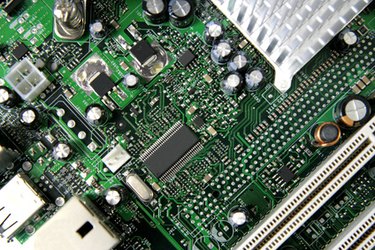
Computer-aided manufacturing, also known as CAM, uses computer-generated designs (CADs) to build something, usually a salable product. Because of the way CAD and CAM interact, many manufacturers have developed combined CAD/CAM systems. Using CAM has benefits, like quick mass production. However, CAM has shortcomings which any engineer or entrepreneur must understand. These disadvantages don't necessarily mean that you should discard CAM as an option for business. But they may affect the approach you take to getting a product on the market.
Cost
Video of the Day
As asserted by the St. Thomas Rich's School Design and Technology Department, computer technology used in CAM is expensive to implement and support. This is complicated by the fact that technology is not constant. New hardware devices and software programs constantly come on the market and engineers and businesspeople have to try to keep up with these changes for compatibility reasons. Furthermore, it costs money to train staff members to use the technology. This means that the cost of CAM does not stop after the initial implementation.
Video of the Day
Technology Failure
Computers used in CAM may break down, as can the related equipment, such as robots. Any time this happens, there is a risk for the slowing or cessation of production. This is not desirable when a company is on a strict production schedule. The risk is highest in companies that rely on an assembly-line structure, as failure in these types of companies affects all points of production past the failure instead of just an isolated production area.
Waste
CAM depends on the accurate designs produced by computer software. If there is a flaw in the design, some materials may be wasted, since you may not discover the flaw until you see the actual product. This isn't a huge issue if the products are recyclable or are inexpensive. However, it becomes a problem in products made from materials that can't be used again, such as Styrofoam, or which have a high cost, such as a car. You also have to take the time and effort to dispose or recycle the waste and purchase replacement materials.
Finished Design
As pointed out by Reference for Business, CAM depends on the designs from a CAD system. Thus, it doesn't aid designers much, as it focuses on the end-stage of a given project. It is hard to develop a CAM system without first having the CAD system.
Quality
Because CAM systems work with the same blueprints every time, they can be highly accurate in terms of producing the same quality of product. However, glitches can and do occur. Since the manufacturing process is automated, company workers may not discover the flaws unless they have a good quality- assurance team.